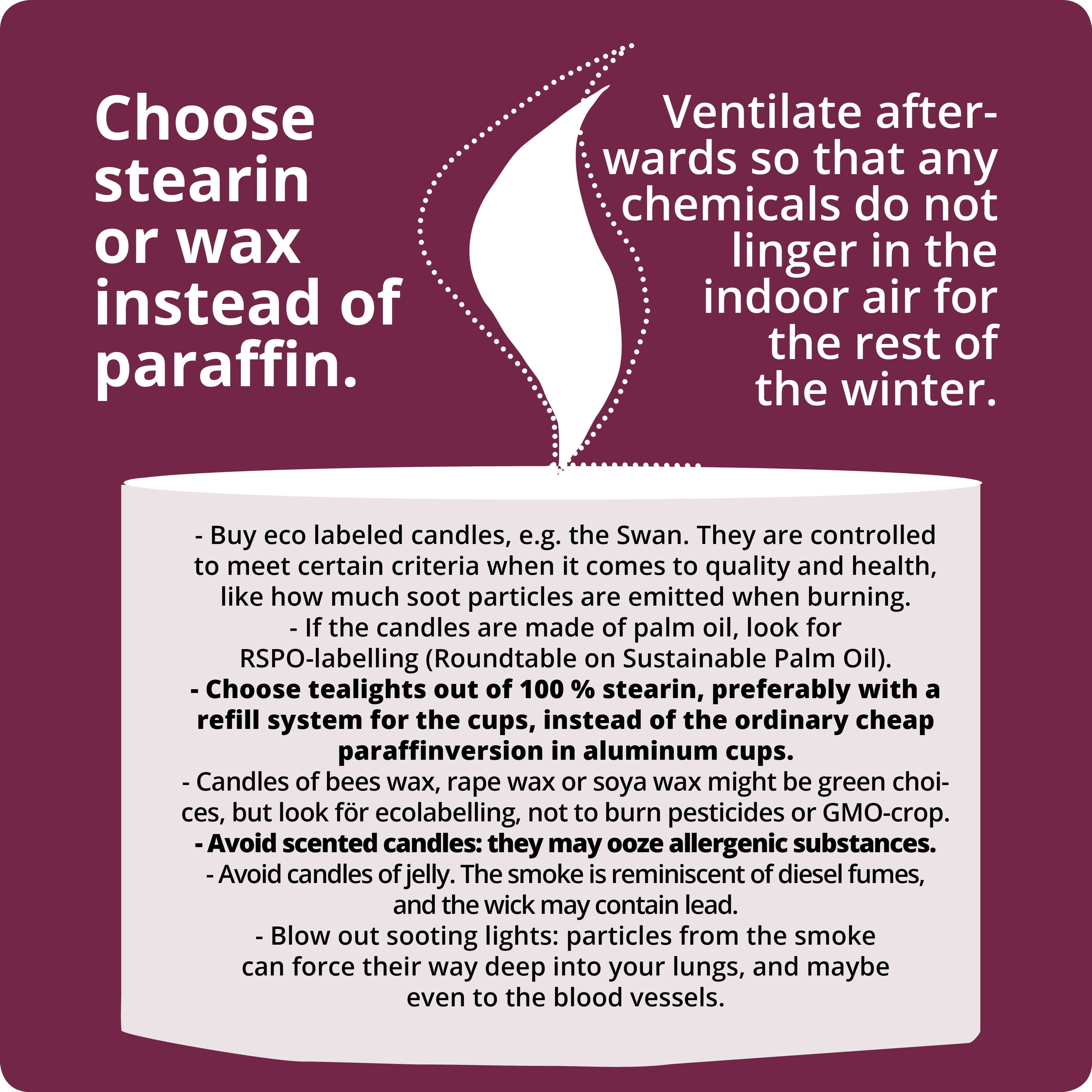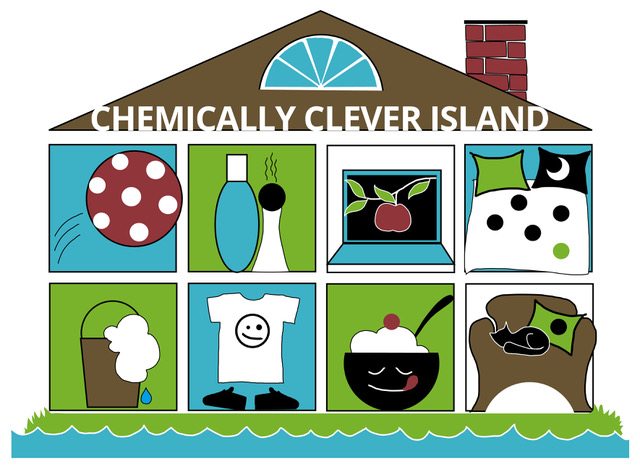Light candles made of stearin

A hundred years ago light meant luxury and status. The more the merrier. Today, with full access to electric light around-the-clock, we consider it more festive to dim the lighting. But toxins are lurking even in the softest candlelight.
In Sweden about 18 100 tons of candles are used every year. Only two or three thousand tons are made of stearin. The rest are paraffin candles. Paraffin is based on fossil raw material. When you light a paraffin candle you initiate an oil combustion similar to when you start a car engine. Paraffin candles emit about 3,5 kilos of carbon dioxide per kilo. In Sweden only the burning of paraffin candles makes an addition of 52 500 tons of carbon dioxide to the atmosphere. That corresponds to the carbon dioxide emissions from 15 000 cars using 1 500 litres of gasolin.
What a difference if everybody would choose stearin candles in the store!
Stearin is made of vegetable or animal fat, renewable raw materials that are also biodegradable. Stearin candles are more expensive but burn longer and emit less chemicals. Swedish scientists have shown that smoke from stearin candles actually is good for the heart. It should be real clean stearin, though: White and unscented, burning with a steady low for complete combustion. In another study dark blue candles made of a mix of paraffin and stearin were investigated. They polluted the indoor air with particles of soot, metals and flame retardants, as well as zinc, copper and cobolt, believed to come from the color. Other substances measured were alkaline nitrates, potassium and sodium from flame retardants in the wick.
Why flame retardants in the wick? To save it from burning too quickly!
One might think that candles have done well without flame retardants for thousands of years. But since paraffin has a lower melting-point than stearin, it both lights and burns faster. It is therefore also considered more flammable.
In 2014, the Norwegian Institute of Public Health issued a warning where they drew parallells between cozy candlelight and passive smoking. The combustion of paraffin for instance emits toluene and benzene, both of which have been connected to increased risk of cancer and asthma. Especially blowing out the light releases large amounts of soot particles. Asthmatics and allergics are most affected, but these substances are harmful to all of us.

